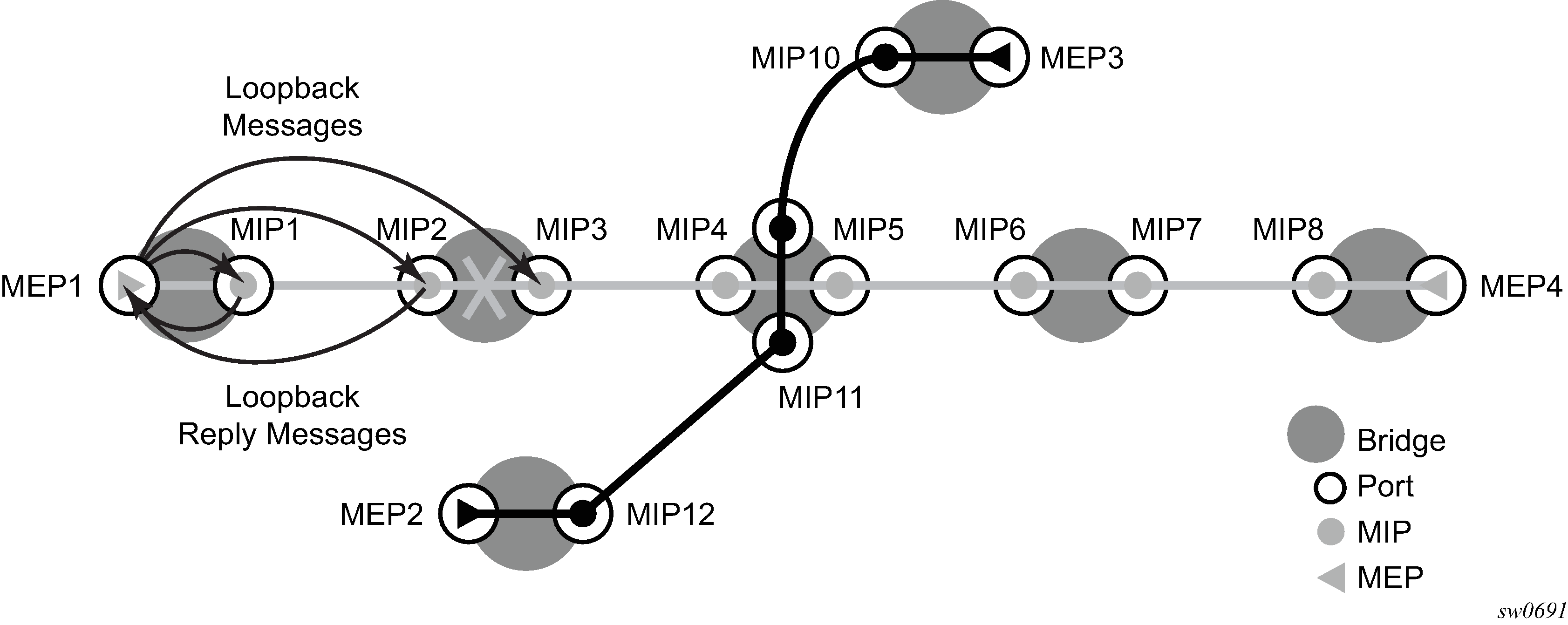A loopback message is generated by a MEP to its peer MEP (see the following figure). The functions are similar to an IP ping to verify Ethernet connectivity between the nodes.

The following loopback-related functions are supported:
Loopback message functionality on a MEP or MIP can be enabled or disabled.
A MEP supports generating loopback messages and responding to loopback messages with loopback reply messages.
A MIP supports responding to loopback messages with loopback reply messages when loopback messages are targeted to itself.
The Sender ID TLV may optionally be configured to carry the Chassis ID. When configured, the following information will be included in LBM messages:
Only the Chassis ID portion of the TLV will be included.
The Management Domain and Management Address fields are not supported on transmission.
As per the specification, the LBR function copies and returns any TLVs received in the LBM message. This means that the LBR message will include the original Sender ID TLV.
The Sender ID TLV is supported for service (id-permission) MEPs.
The Sender ID TLV is supported for both MEPs and MIPs.
Loopback test results are displayed on the originating MEP. There is a limit of 10 outstanding tests per node.